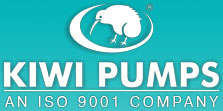
Pumps Information » Mechanical Vaccum Pumps
Mechanical Vaccum Pumps
Mechanical Vaccum Pumps and systems contain devices such as pistons, claws, scrolling spirals, and diaphragms to isolate and compress air. They are most efficient in the rough and medium vacuum ranges, but lose efficiency at high and ultrahigh vacuum levels. Most mechanical pumps and systems are powered by compressed air; however, a variety of other power sources are also available. DC powered devices use battery power and inputs from power supplies. Common AC single-phase voltages are 115 V (60 Hz) and 230 V (50 Hz). Common AC three-phase voltages are 208 V and 377 V. Engine-powered mechanical vacuum pumps and systems use gasoline or diesel engines. Turbomolecular devices increase vacuum pressure by molecular absorption instead of mechanically moving parts. Magnetic drives use a rotating magnetic field to drive the pump impeller and feature a seal-free construction. Some mechanical vacuum pumps and systems are portable or small enough to sit atop a table or workbench. Others are designed for permanent installations or rest on the floor or atop a skid. There are many mechanical pump technologies.
Axial blowers convert axial velocity to pressure. By contrast, centrifugal blowers convert radial velocity to pressure. Both types of devices provide very high flow rates. Regenerative blowers are similar to centrifugal blowers, but produce several stages of compression. Several types of piston-based pumps are commonly available. Circumferential pistons use two rotors, each of which has two wings that trap and compress air. Reciprocating pistons reduce the air volume inside a cylinder and produce vacuum levels that are higher than those produced by other types of mechanical pumps. Rocking pistons are similar to reciprocating pistons, but are not articulated. Rotary pistons or cams evacuate air through a check valve on the compression stroke. Diaphragm pumps have a much lower compression ratio than piston pumps, but are quieter and more economical. Gear pumps are positive displacement devices that use the meshing of gear teeth to reduce the volume, move the air, and evacuate the vacuum chamber.
Claw or rotary claw pumps use precision-designed, intermeshing hooks with very tight tolerances and clearances for highly efficient internal compression. Linear pumps use electromagnetic oscillation to compress the stroke of a sliding piston. Rotary vane systems consist of an eccentrically-mounted rotor and sliding vanes. Rotary screw mechanical pumps and systems consist of two or more spindles with intermeshing screws that rotate in opposite directions. Scroll pumps that compress air between the surfaces of mating spirals are also available. Selecting mechanical vacuum pumps and systems requires an analysis of performance specifications and features. Vacuum levels are often expressed in torr, a unit of measure equal to that exerted by a 1 mm high column of mercury (Hg) at 0° C and standard gravity. Pumping speed or displacement is the air volume capacity.
Typically, vacuum pumps are flow-rated according to the volume of air exhausted without a pressure differential across the pump. Motor power is a reference value used to characterize vacuum pump size. In terms of features, some mechanical vacuum pumps and systems include a control panel or valve sequencing control. Others provide a vacuum gauge with analog or digital readouts. Integral traps prevent backstreaming and contamination in sanitary or high vacuum applications. Gas ballasts allow atmospheric air into the compression chamber, minimizing condensate and prevent corrosion. Lubrication options include positive pressure and splash lubrication. Oil-flooded and dry or oil-less devices are also available. Mechanical vacuum pumps and systems can include one or more stages with the same technology type, or different technology types altogether.
